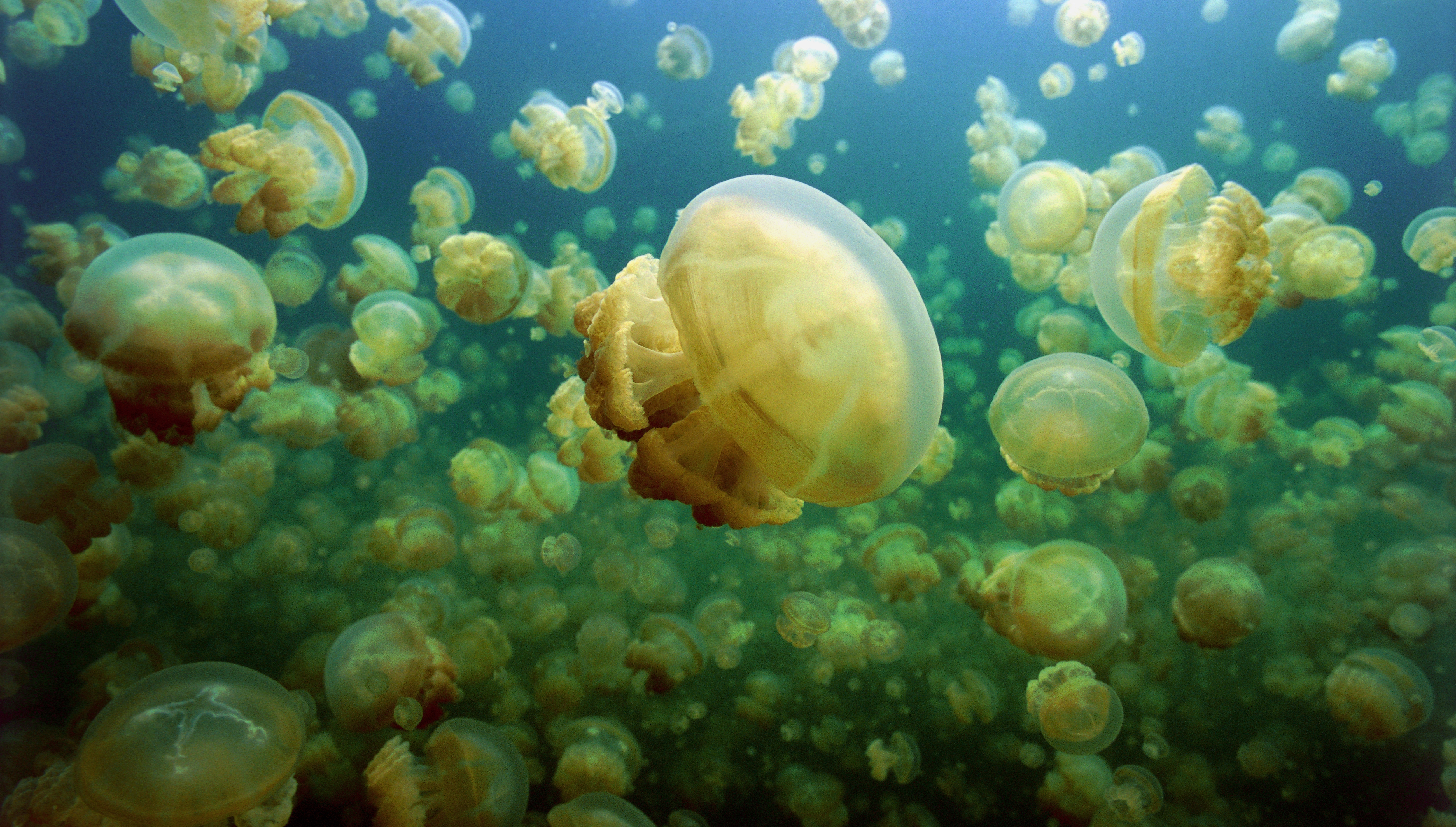This article first appeared in Issue 14 of our free digital magazine CURIOUS.
Twelve thousand years ago, changing sea levels left a pocket of water isolated from the rest of the ocean, trapping in its confines a group of jellyfish. The unique subspecies can’t be found anywhere else on Earth, but exist in their millions in Palau’s Jellyfish Lake.
Jellyfish reign supreme inside one of 70 saltwater lakes on an island off the coast of Koror, Palau, in the western Pacific, that’s uninhabited by humans. The water bodies were once connected to the ocean but got cut off thousands of years ago, creating unique pockets of ecosystems and unusual food chains including a haven for cnidarians.
It’s estimated that Jellyfish Lake may have become isolated from the ocean as far back as 12,000 years ago, trapping its inhabitants. This was due to rising sea levels depositing them in the lake before receding again, leaving them behind.
Its residents are Mastigias papua etpisoni, also known as the golden jellyfish. The unique subspecies is named after former President Ngiratkel Etpison and this marine lake is the species’ exclusive home.
They survive in partnership with symbiotic algae that live in their tissues. Collectively, these dinoflagellates are known as zooxanthellae, a term used to describe single-celled microorganisms that live inside a range of marine invertebrates including demosponges, corals, jellyfish, and nudibranchs.
Subscribe to our newsletter and get every issue of CURIOUS delivered to your inbox free each month.

The lake is home to millions of jellyfish.
Image credit: zaferkizilkaya/Shutterstock.com
Jellyfish aren’t the only wildlife found in the lake, which is lined at its edge by mangrove trees whose tangled roots are bustling with marine invertebrates. It’s also home to moon jellyfish, but the golden jellyfish are by far the most numerous. During a peak for the lake’s residents back in 2005, it’s estimated there were around 30 million M. papua etpisoni in Jellyfish Lake, but most of the time there are thought to be nearer to 5 million swimming around.
While they can rest easy without the fear of predators, the jellyfish have a job to do. To ensure their tenant zooxanthellae get the sunlight they need for photosynthesis, they must rotate and swim around the lake’s surface waters if they’re to receive any energy and nutrients in return.
The lake’s collaborating inhabitants aren’t its only peculiar feature, as the water column is split up with all the complexity of a B52 shot. In total, it’s around 400 meters (1,312 feet) long and 30 meters (98 feet) deep, but not all of the lake is safe to swim in.
At a depth of 13 to 15 meters (43 to 49 feet) sits a pink layer of bacteria that light cannot get through, creating a barrier beyond which no sunlight or oxygen can reach. This means the bottom water layer is made up of poisonous dissolved hydrogen sulfide gas, explains the Coral Reef Research Foundation.
So, are you going in?
How to get there: The best way to visit Jellyfish Lake is as part of a tour as environmental fees and permits are required to swim among the jellies, and they can collect you from Koror.
CURIOUS magazine is a digital magazine from IFLScience featuring interviews, experts, deep dives, fun facts, news, book excerpts, and much more. Issue 17 is out now.
Source Link: Jellyfish Lake In Palau Is Home To 5 Million Members Of A Unique Species